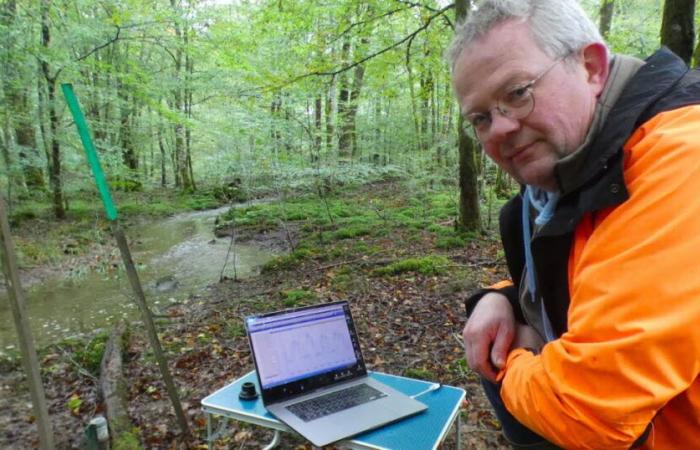The extent of the operation carried out in the Chaux forest (which made it possible to restore more than 50 kilometers of streams) and the scientific monitoring carried out over several years make it a small open-air laboratory. An example of restoration of wetlands in forests which could be duplicated elsewhere in the future.
Up to 7 kilometers dry
In this 20,000 hectare massif located to the east of Burgundy Franche-Comté – the second largest deciduous forest in France – the degraded state of certain watercourses was worrying.
“The drainage works carried out since the beginning of the 20th centurye century, and intensified in 1950-1970 to facilitate the reforestation of plots, led to a progressive deterioration with a drying up and a sinking of streams into their bed”, explain Eric Lucot and François Degiorgi, teacher-researchers at the Chrono-Environnement laboratory of the University of Franche-Comté. “Result: the low flow of the Clauge, which crosses the forest, was very low. We had up to 7 kilometers dry for 5 to 6 months of the year. »
A lack of water which was obviously not without consequences on the species (amphibians, insects, fish) present in this Natura 2000 zone, as well as on certain stands of dying oaks.
Water agency, ONF and researchers involved
To help slow the flow of water, initial restoration work will then be undertaken between 2005 and 2008 as part of the European Life program, in collaboration with the National Forestry Office (ONF).
“The goal was to encourage the streams to return to their old meandering beds, by installing vegetated benches, by placing stoppers and semi-buried log jams. This helps slow down the flow without blocking it and improves the recharge of the water table in the soil,” indicates Michel Romanski, head of the Chaux territorial unit at the ONF.
Very quickly, the results will be there. “We have seen the return of certain very occasional or almost extinct species (caddis, mayflies, etc.) with the lengthening of the hydroperiod and the reactivation of wetlands,” explains Eric Lucot.
After this conclusive experience, a more ambitious work program will be undertaken from 2015 to 2018, with the financial support of the Rhône Méditerranée Corse Water Agency; then continued between 2021 and 2023, with parallel scientific monitoring carried out through probes and surveys.
The Tanche stream soon on the program
Today, a whole group of academics, public establishments and research offices are collaborating on this approach, to document the long-term effects on waterways, soils and the forest ecosystem.
Witness streams (rectified in the past and not restored) provide information, at the same time, on the impact of restoration and climatic variations. “We think that there will be less sensitivity to droughts, in addition to the humidity gained in the valleys, and the indirect effects induced (on the reduction of downstream floods, the supply of drinking water or the slightest discharge of carbon)”, concludes the Franche-Comté researcher.
Similar work will be undertaken on the neighboring Tanche stream by 2026-2027.
France






